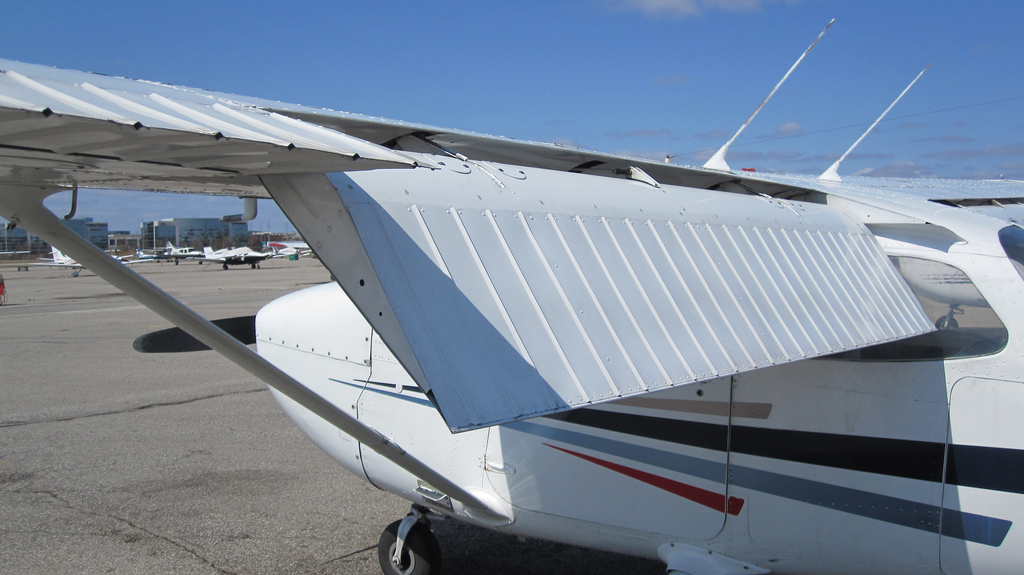I've been told that deploying the flaps on approach enables the following:
- Potentially steeper approach
- Slows down the plane
- Lower stall speed
It's the last one that confuses me.
Given the equation for lift:
$ L = \frac{1}{2}C_l ρ V^2 S$
with:
- $L$ - lift
- $C_l$- lift coefficient
- $\rho$ - density of the air
- $V$ - velocity
- $S$ - surface area of the wing
When we deploy the flaps, we automatically change the camber of the wing which does the following:
- Increases the surface area of the wing
- Increases our current angle of attack
As a result of the change in surface area of the wing, we can decrease our V in the equation and generate the same amount of lift that was needed before flaps. Does that sound correct?
For most practical purposes, your average GA pilot doesn't deal with the AOA because it can't be readily calculated so the POH typically lists the stall speed Vs. However, as I understand it, stall speed is indirectly correlated with our plane's "critical angle of attack".
What I don't quite understand is, why exactly does our stall speed decrease when we deploy the flaps?
Is it because of what I outlined earlier, that we can produce an equivalent amount of lift at a lower speed because of the change in wing surface area?




